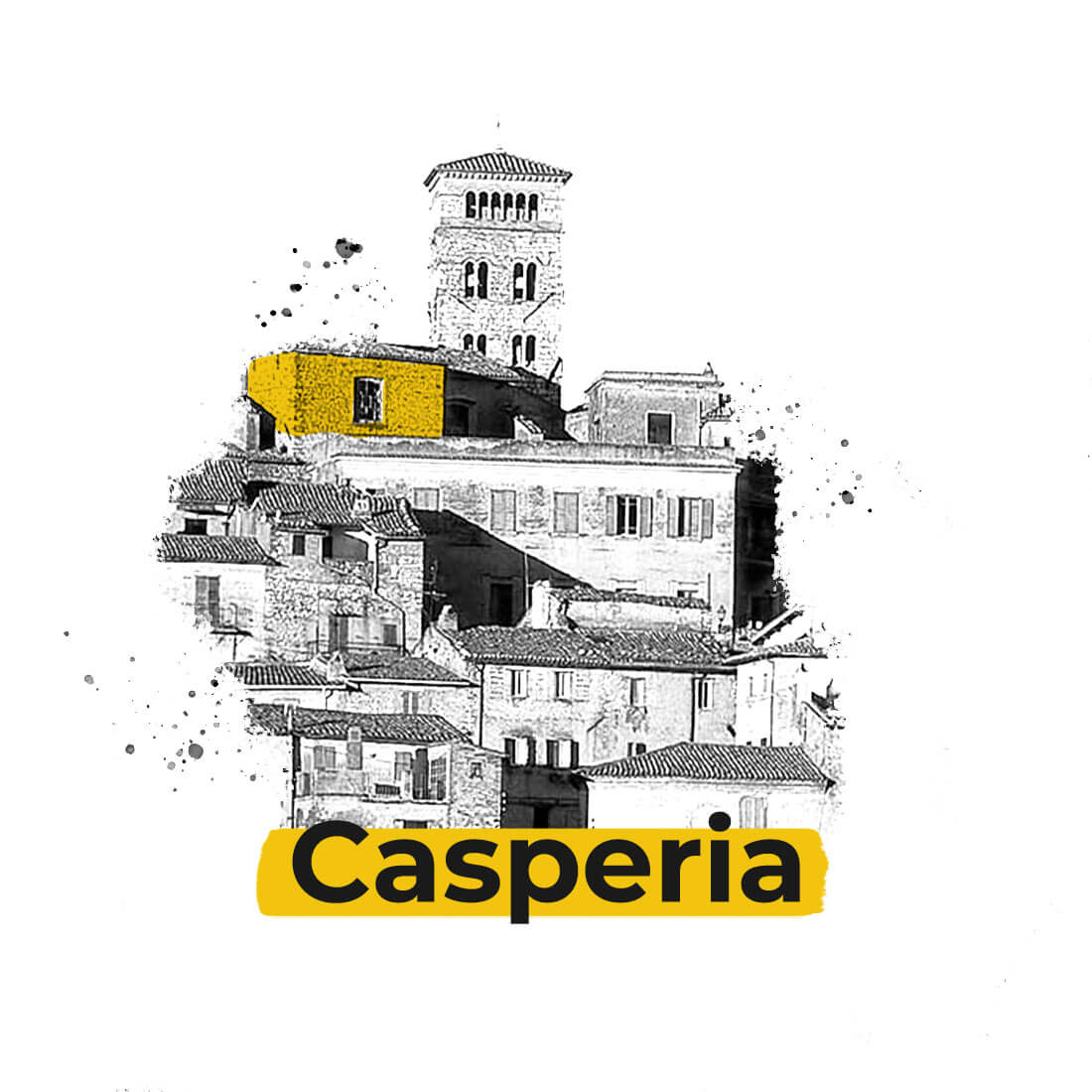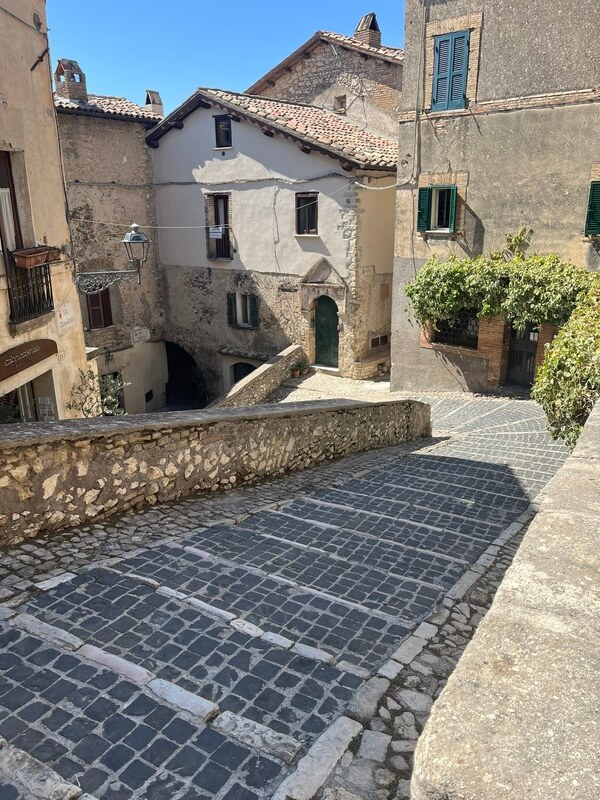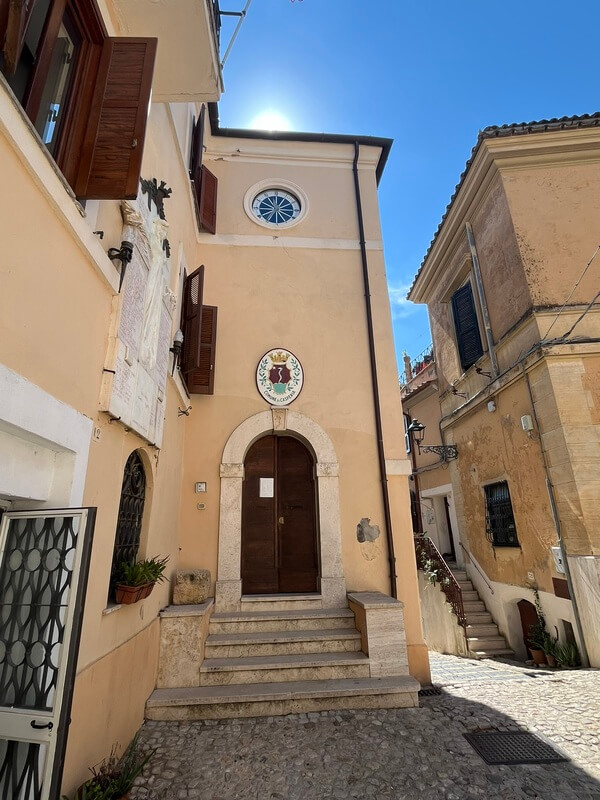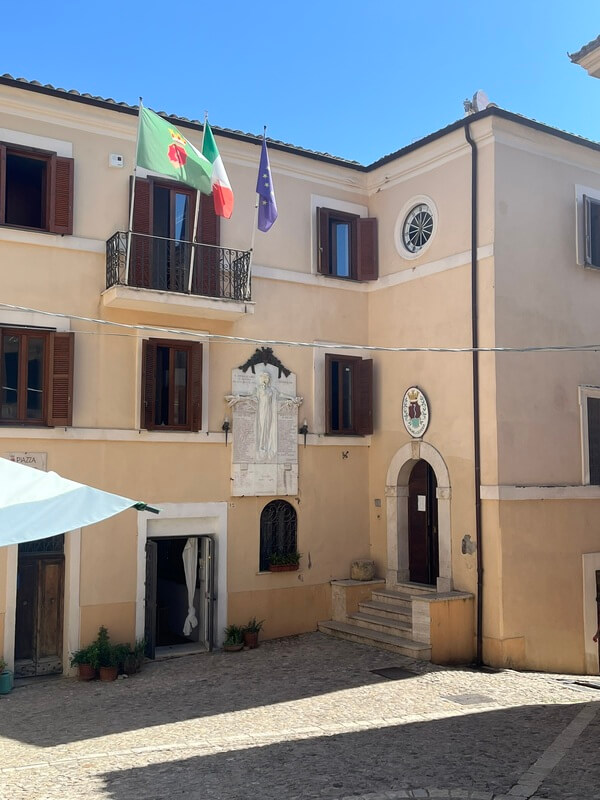Casperia ‘s origins are rooted in antiquity. Mentioned inVirgil’s Aeneid and described by the illustrious German historian Ferdinand Gregorovius in 1861, Casperia changed its name in 1947: until that year it was known as Aspra Sabina, probably in reference to the rugged and impervious conformation of the territory, characterized by Mount Aspra on which it stands.
The Village of Casperia

Posizione
P.za del Municipio,
02041 Casperia RI

Orari di apertura
Always open
Casperia ‘s origins are rooted in antiquity. Mentioned inVirgil’s Aeneid and described by the illustrious German historian Ferdinand Gregorovius in 1861, Casperia changed its name in 1947: until that year it was known as Aspra Sabina, probably in reference to the rugged and impervious conformation of the territory, characterized by Mount Aspra on which it stands.
To walk through the narrow streets of Casperia is to immerse oneself in a medieval village that has remained intact over the centuries. The historic center, shaped like an “onion bulb,” is a labyrinth of concentric alleys that narrow as you approach the top, where the striking Piazza San Giovanni Battista, flanked by the parish church of the same name, dominates.
One of the most appreciated features of Casperia is the total pedestrianization of the village: cars are banned from the center, allowing visitors to fully enjoy the timeless atmosphere of the place. The impeccable cleanliness of the streets and corners further contributes to the charm of this ancient village.
Entrance to the village is through two main gates: Porta S. Maria to the northeast and Porta Romana to the west. These openings in the medieval walls testify to Casperia’s historical and defensive importance since the 11th century, when the first city wall was erected. The inhabitants, called “Aspresi,” were so attached to the care of the walls that the 1397 statutes even provided for the death penalty for anyone who opened enough openings for a person to pass through.
From Via Garibaldi, passing under the Arco di Mezzo and the Arco Vecchio, it is possible to follow an itinerary that offers breathtaking views of the Tiber Valley, Mount Soratte and the Sabine Mountains.
The highest point of the village houses the Church of St. John the Baptist, enlarged in the 16th century and renovated in the 18th century in Baroque style. The church contains frescoes from the 14th century and an altarpiece from 1524 by Giacomo Santoro. Also not to be missed is the monumental nativity scene, the work of Giannicola Mariani.
Other buildings of interest include the Palazzo Forani, also from the 17th century, which further enrich the architectural and historical heritage of the village. The most historic part, rich in 18th- and 19th-century frescoes and decorations, is open to visitors to the palace. Here it is possible to explore more than thirty rooms, each furnished with furniture and details reflecting various historical styles, from classic empire style to deco elegance.














